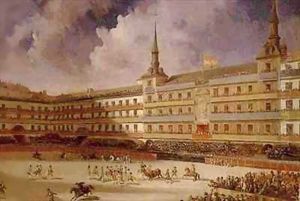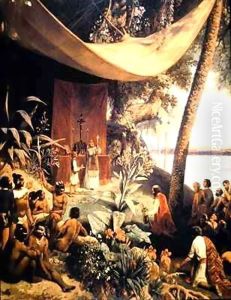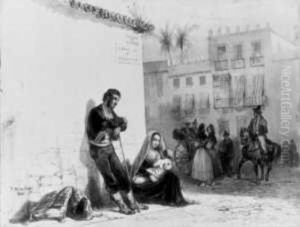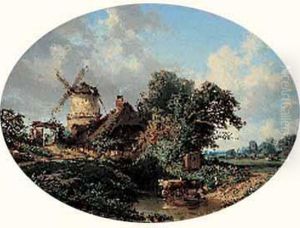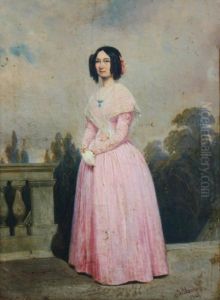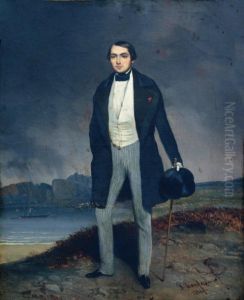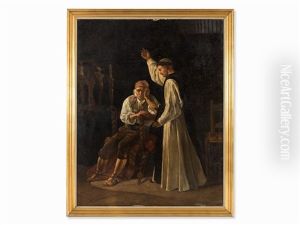Pharamond Blanchard Paintings
Pharamond Blanchard was a French artist, born in 1805 in La Rochelle, France. He was known for his historical paintings, landscapes, and architectural works. Blanchard’s artistic journey began at the École des Beaux-Arts in Paris, where he studied under prominent figures like François-Édouard Picot.
His work was characterized by a keen attention to detail and a strong sense of composition, which he applied to various historical and mythological scenes. Blanchard's paintings often reflected the academic style of the time, which emphasized classical themes and techniques. He participated in the Salon, the official art exhibition of the Académie des Beaux-Arts in Paris, where his works were exhibited to the public and critiqued by art connoisseurs.
Throughout his career, Blanchard was influenced by the Romantic movement, which was prevalent during the early 19th century. This influence is evident in the emotive content and dramatic lighting of his paintings. Despite this, he maintained a certain level of academic classicism in his work, which allowed him to appeal to a wide range of audiences.
Pharamond Blanchard traveled extensively, which influenced his artistic style. His travels took him to Italy, where he studied the great masters of the Renaissance, and to the Middle East, where he was inspired by the exotic landscapes and historical significance of the region. These experiences enriched his palette and broadened his thematic range, allowing him to incorporate diverse elements into his artwork.
Blanchard's legacy is not as well-known as some of his contemporaries, but he made significant contributions to the French art scene of the 19th century. His works are housed in various museums and collections around the world, where they continue to be appreciated for their historical value and artistic merit. Pharamond Blanchard passed away in 1873, leaving behind a body of work that continues to be studied and admired by art historians and enthusiasts alike.
